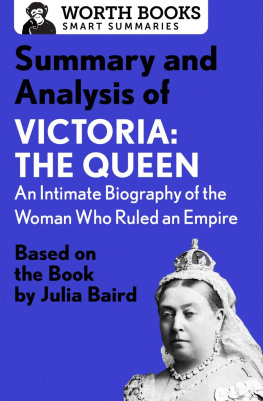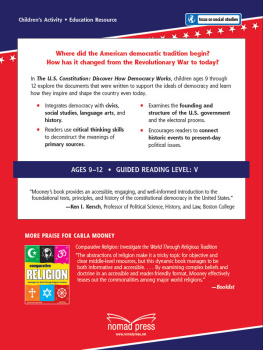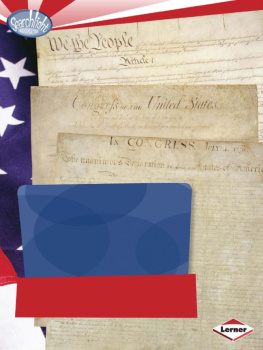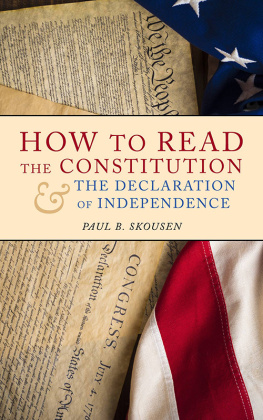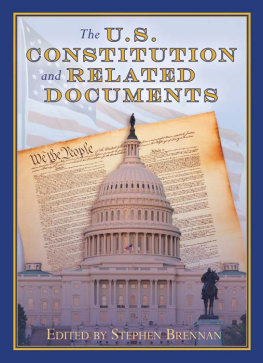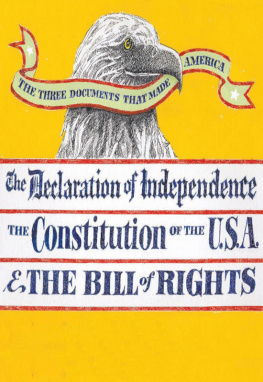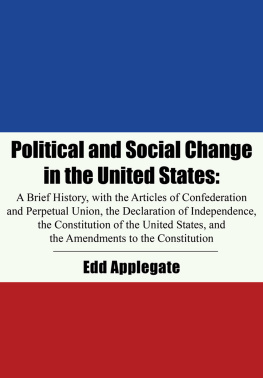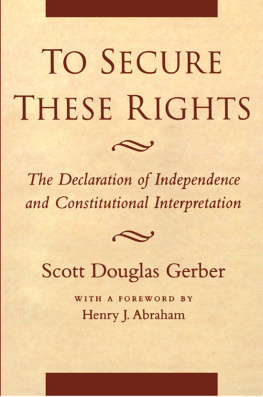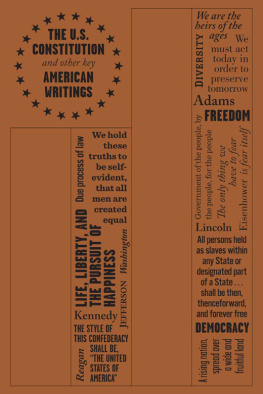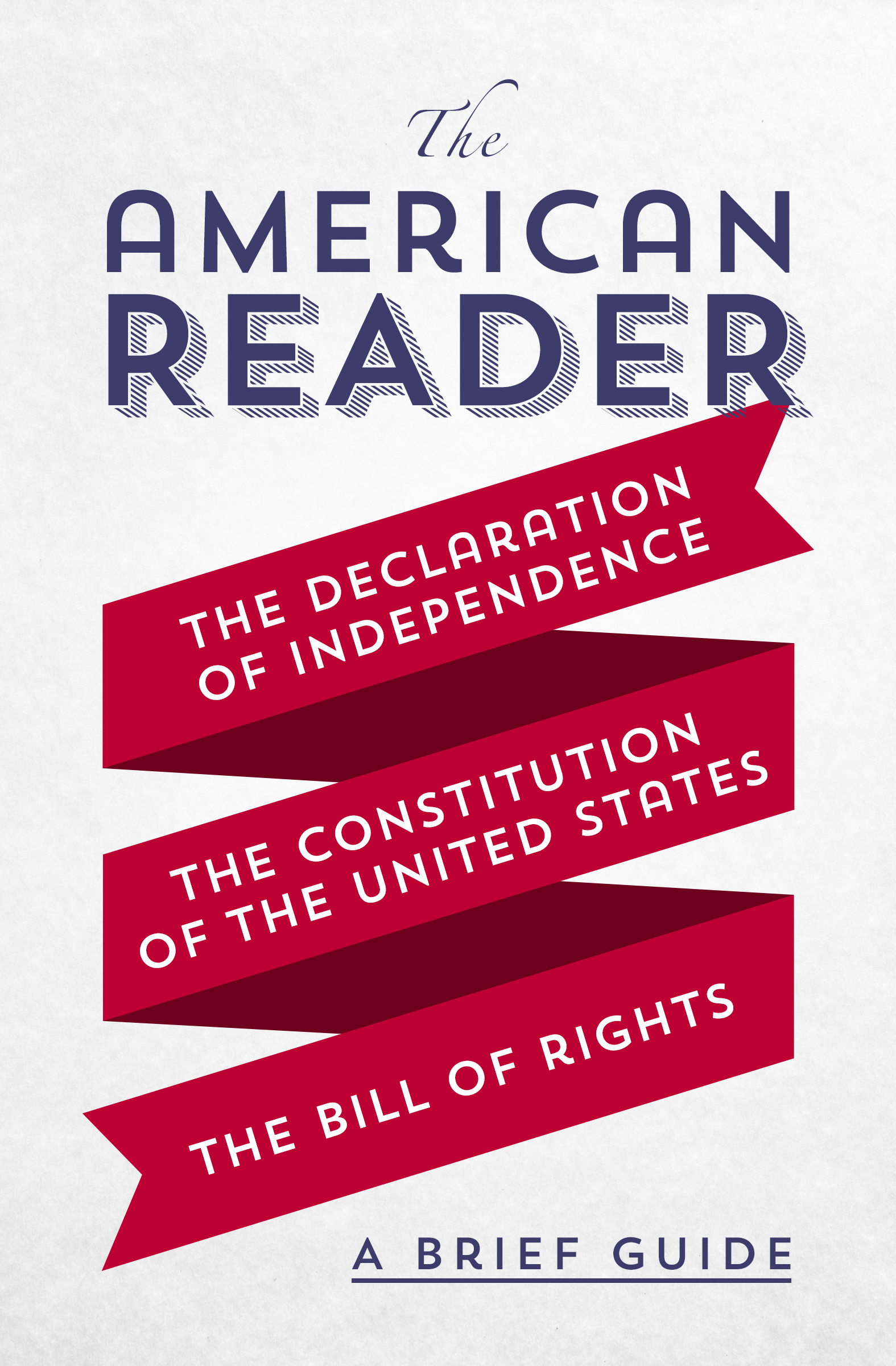The American Reader
A Brief Guide to the Declaration of Independence, the Constitution of the United States, and the Bill of Rights

Introduction
The Declaration of Independence, the Constitution of the United States, and the Bill of Rights are the three most significant and seminal documents in American history.
The Declaration and the Constitution were drafted by the Second Continental Congress and the Constitutional Convention that met in the Independence Hall in Philadelphia in 1776 and 1787, respectively. The Bill of Rights, namely the first ten amendments to the Constitution, was proposed during one of the early sessions of the US Congress, which met in Federal Hall in New York City in 1789. Thomas Jefferson was the principal author of the Declaration of Independence while James Madison was the primary author of the Bill of Rights. Madison, along with Gouverneur Morris and James Wilson, also helped shape the Constitution.
The foundation of all three documents is the belief that all people have certain basicor, inalienablerights and that the government is responsible for protecting them. These rights encompass common law rightsthe concept of which originates from English acts and laws like the Magna Carta and the 1689 Bill of Rightsand natural rightswhich, the Founding Fathers believed, belong inherently to all by virtue of their humanity; no legitimate government may change or violate them.
Despite the unifying purpose of preserving the rights of the people, the Declaration of Independence and the Constitution, and therefore, the Bill of Rights, each serve different functions. The Declaration was written to justify Americas breaking away from Englands sovereignty, while the Constitution was designed to establish an entirely new government. The Declaration served its purposeAmerica gained independence from England on July 4, 1776and has never been revised. On the other hand, the Constitutionwhich adapts to the needs of the peoplehas been amended twenty-seven times. The document allows for a functional, flexible, and responsive governing body, empowered to preserve the blessings of liberty for We the People of the United States. The first ten amendments of the Constitution, however, remain unaltered, and speak to the colonists fear of an overly centralized government. In this sense, the Constitution and its Bill of Rights complement the Declaration by proving Americas ability to govern its people and defend personal liberties.
These documents are the foundation of our federal republic, and they represent what is best about the US system of government. They are symbols of the liberty that continues to attract people from all over the world to the United States, promoting that all are equal in the eyes of the law.
In the centuries since the creation of our founding documents, the liberties set forth within them have faced many challengesincluding war, unrest, political debate, and legal disputes. Those tests persist today, but the initial strength of these documents continues to withstand the test of time, shining as beacons of hope and freedom.
Timeline
February 10, 1763: The Treaty of Paris (also known as the Treaty of 1763) ends the French and Indian War, and France surrenders all of their North American possessions east of the Mississippi to Britain. While the treaty ended the war, the debts incurred and the cost of maintaining order in the acquired territory cause the British government to impose new taxes on the colonies.
March 22, 1765: The Stamp Act is passed by the British Parliament, taxing colonists for printed paper, including legal documents, licenses, newspapers, and even playing cards. The colonists rebel and successfully repeal the Stamp Act the following year.
June 15July 2, 1767: Parliament passes the Townshend Acts, a series of four acts imposing taxes on lead, glass, paper, paint, and tea.
October 1768: British troops arrive in Boston to enforce the Townshend duties and suppress local radicals. The colonists refuse to accept the presence of the troops, leading to fights in the streets.
March 5, 1770: The Boston Massacre occurs when a local crowd begins harassing a group of British soldiers outside a customs house. The militiamen open fire, killing five civilians.
December 16, 1773: American patriots disguised as Mohawk Indians dump 342 chests of East India Company teavalued at approximately $18,000 at the timeinto Boston Harbor.
MayJune 1774: The Coercive, or Intolerable Acts, strip Massachusetts of self-government and judicial independence, sparking a boycott of all British goods.
September 5October 26, 1774: Colonial delegates meet at the First Continental Congress to organize opposition to the Intolerable Acts.
April 19, 1775: The battles of Lexington and Concord are the first engagements between British soldiers and the armed civilian colonists who become known as Minutemen.
December 22, 1775: Parliament passes the Prohibitory Act, which establishes a blockade of US ports and declares American ships to be enemy vessels.
January 9, 1776: Thomas Paines Common Sense is published anonymously.
July 4, 1776: The Second Continental Congress adopts the Declaration of Independence.
February 6, 1778: France recognizes the United States of America as an independent nation.
March 1, 1781: The Articles of Confederation are ratified by all thirteen states.
October 18, 1781: British forces surrender in Yorktown, Virginia.
March 5, 1782: The British Parliament votes to authorize peace negotiations.
September 3, 1783: The Treaty of Paris formally ends the Revolutionary War, recognizes American independence, and establishes US borders.
17861787: Continental Army Captain Daniel Shays leads a violent uprising against debt collection in Massachusetts that comes to be known as Shays Rebellion.
May 25, 1787: The Constitutional Convention begins in Philadelphia, and fifty-five delegates from every state, excluding Rhode Island, begin drafting the Constitution.
September 17, 1787: The Constitutional Convention ends with members signing the final draft of the Constitution.
June 21, 1788: New Hampshire ratifies the Constitution, the ninth state to do so, which allows the document to become the law of the land.
March 4, 1789: The new US government, under the Constitution, formally begins.
September 25, 1789: Congress proposes twelve amendments to the Constitution.
December 15, 1791: Congress ratifies ten of the twelve proposed amendments, which become the Bill of Rights.
The Declaration of Independence
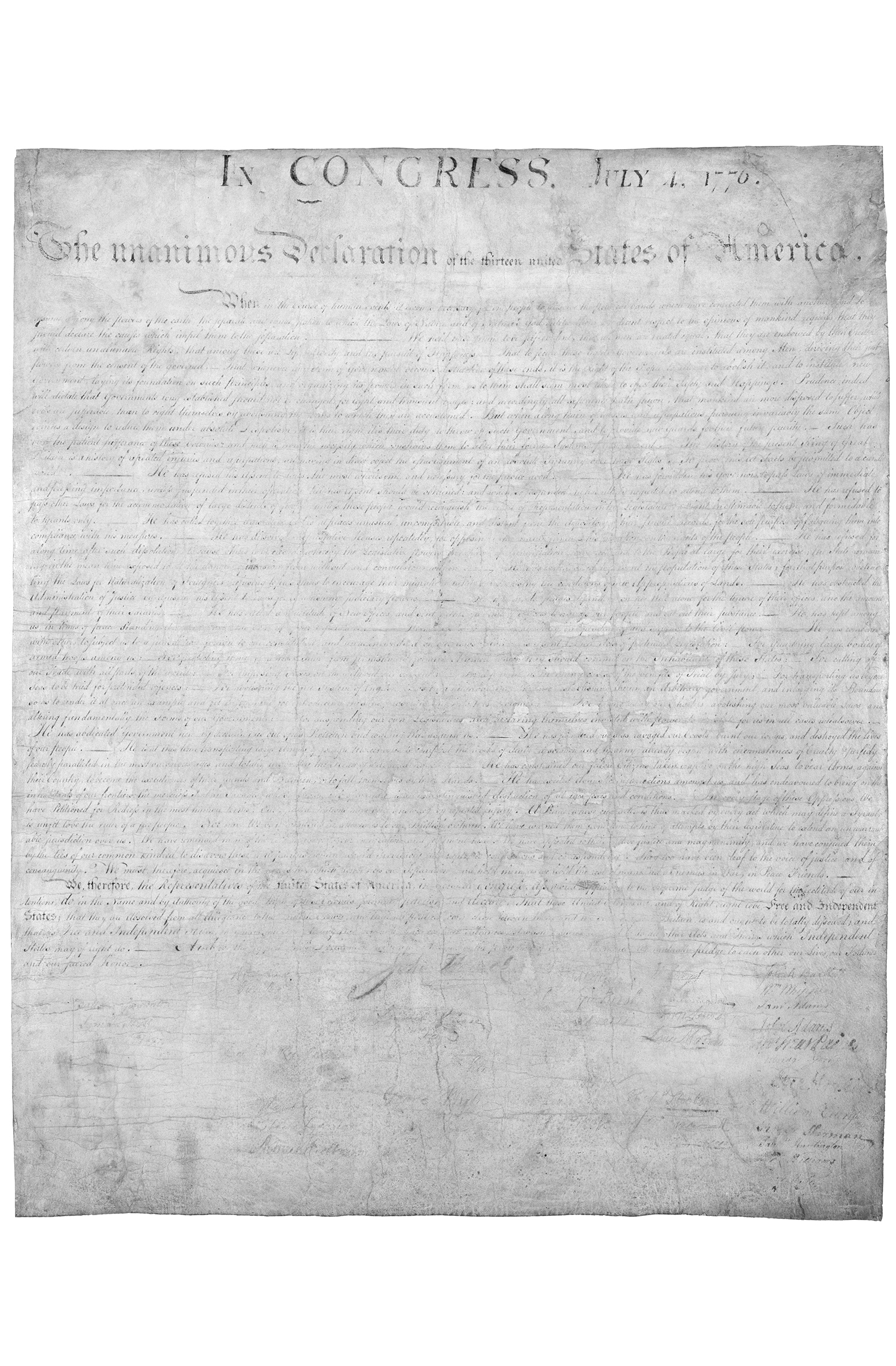
In Congress, July 4, 1776.
The unanimous Declaration of the thirteen united States of America, When in the Course of human events, it becomes necessary for one people to dissolve the political bands which have connected them with another, and to assume among the powers of the earth, the separate and equal station to which the Laws of Nature and of Natures God entitle them, a decent respect to the opinions of mankind requires that they should declare the causes which impel them to the separation.
We hold these truths to be self-evident, that all men are created equal, that they are endowed by their Creator with certain unalienable Rights, that among these are Life, Liberty and the pursuit of Happiness. That to secure these rights, Governments are instituted among Men, deriving their just powers from the consent of the governed, That whenever any Form of Government becomes destructive of these ends, it is the Right of the People to alter or to abolish it, and to institute new Government, laying its foundation on such principles and organizing its powers in such form, as to them shall seem most likely to effect their Safety and Happiness. Prudence, indeed, will dictate that Governments long established should not be changed for light and transient causes; and accordingly all experience hath shewn, that mankind are more disposed to suffer, while evils are sufferable, than to right themselves by abolishing the forms to which they are accustomed. But when a long train of abuses and usurpations, pursuing invariably the same Object evinces a design to reduce them under absolute Despotism, it is their right, it is their duty, to throw off such Government, and to provide new Guards for their future security. Such has been the patient sufferance of these Colonies; and such is now the necessity which constrains them to alter their former Systems of Government. The history of the present King of Great Britain is a history of repeated injuries and usurpations, all having in direct object the establishment of an absolute Tyranny over these States. To prove this, let Facts be submitted to a candid world.






